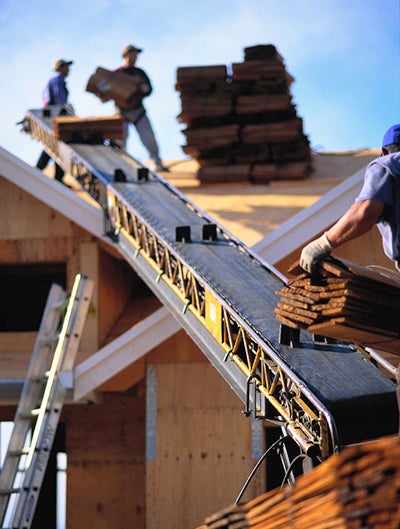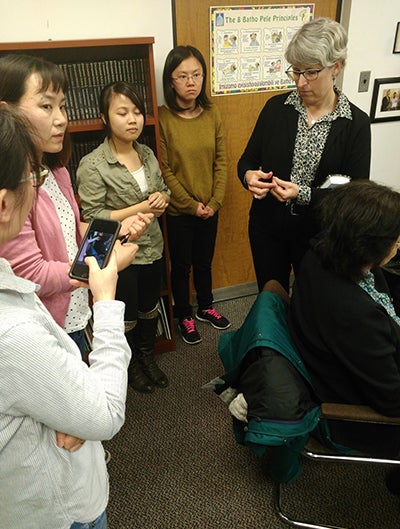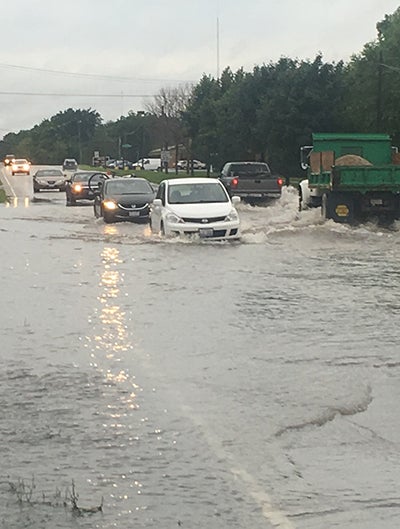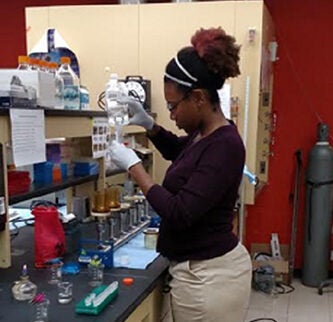Research and Community Engagement
RESEARCH AND COMMUNITY ENGAGEMENT
-
Research Cutting edge research in workplaces and communities across Chicago, Illinois, and the world.
-
Practice Impactful and applied public health practice to protect the health of vulnerable workers and communities.
-
Partners Opportunities to collaborate with stakeholders from diverse industries and communities.
List of Centers
We prioritize community engagement in every step of the research process, from study design to knowledge translation. We are home to a number of research and education centers that are doing cutting-edge research in partnership with communities. Explore our research and education centers to learn more about how our research is used to inform public health interventions and policy change.
Center for Healthy Work
The UIC Center for Healthy Work is a research and education center established in 2016 to advance the health and well-being of workers in Chicago, the state of Illinois, and the nation. The center is one of ten Centers of Excellence for Total Worker Health®, funded by the National Institute for Occupational Safety and Health.
The Center’s mission is to remove barriers that impact the health of low-wage workers in the increasingly contingent workforce. They aim to identify and promote employment programs, practices, and policies that will improve worker and community health locally, statewide, and nationwide.
Great Lakes Center for Occupational Health and Safety
With more than 40 years of service, the Great Lakes Center for Occupational Health and Safety is a recognized leader in the national and international movement to promote healthier environments, workplaces, and workers. The center is one of 18 Education and Research Centers funded by the National Institute for Occupational Safety and Health.
The center provides master’s and doctoral training in industrial hygiene, occupational safety, occupational and environmental epidemiology, agricultural health and safety, and occupational medicine and coordinates continuing education and outreach activities to enhance worker health and safety.
Great Lakes Center for Children's Environmental Health
The Great Lakes Center for Children’s Environmental Health was established in 1999 in partnership with the United States Environmental Protection Agency (EPA) and the Agency for Toxic Substance and Disease Registry (ATSDR) to promote and protect children’s health through prevention, education, diagnosis and treatment of environmentally related diseases. View their brochure here or subscribe to their monthly newsletter.
Great Lakes Center for Farmworker Health and Wellbeing
The Great Lakes Center for Farmworker Health and Wellbeing is part of a network of Centers for Agricultural Safety and Health funded by The National Institute for Occupational Safety and Health (NIOSH). The center is comprised of academics and service providers across multiple disciplines who recognize the critical importance of hired migrant and seasonal farmworkers in sustaining agriculture and our food supply chain. The Great Lakes Center for Farmworker Health and Wellbeing team works in Illinois, the Midwest, and beyond to promote and protect the health and well-being of these essential workers.
Occupational Health Service Institute (OHSI)
The Occupational Health Service Institute (OHSI) is a dynamic service agency that brings together the skills of UI Health experts from many disciplines. New programs are constantly being developed based on the needs of the community. OHSI’s priorities are to provide services to the community on a local, regional, national, and international level.
OHSI is an integral part of the Great Lakes Center for Occupational Health and Safety at the UIC School of Public Health. OHSI allows UIC faculty to provide public health service to industries, unions, governmental institutions, communities, and individuals as part of their work at the University of Illinois at Chicago.
Mining Education and Research Center (MinER Center)
Evaluating the Health Benefits of Green Affordable Housing

This project explores improvements in housing quality and associated environmental and personal health indicators after “green” rehabbing of low-income housing in the Chicago area. “Green” rehabbing refers to environmentally friendly solutions to home renovation such as efficient home insulation, installation of proper ventilation, and moisture and mold reductions.
EOHS researchers Dr. Susan Buchanan and Dr. David Jacobs note that this project evaluates whether asthma hospitalizations, days of school missed due to asthma symptoms, and costs of medical care have decreased in the rehabbed communities. This discovery could be used to help promote healthy indoor environments in housing for children.
Helping lead the charge, an EOHS Doctoral Student has been trained in the monitoring equipment that is used in the homes of participants of this project. These include ambient monitors for CO2, CO, formaldehyde, temperature, relative humidity and VOCs, vacuuming for allergen dust samples, home inspection, as well as testing participants for NO in exhaled breath and spirometry, including peak expiratory flow.
The project is performed in Chicago in collaboration with Enterprise Community Partners, The National Center for Healthy Housing in Washington DC, Icahn School of Medicine at Mount Sinai in New York City, and the University of California San Francisco.
Occupationnal Injury Prevention

EOHS occupational injury prevention research aims to develop a broad state-based surveillance program. The research is led by EOHS’ Dr. Linda Forst and Dr. Lee Friedman and is supported by CDC NIOSH, the Illinois Workers’ Compensation Commission, and the OSHA Area 5 office.
EOHS students have been highly engaged in this area of research, with many student-led projects focusing on construction workers, contingent laborers, foreign/migrant laborers, service industry workers, automakers, gig workers, farmers, and miners. Funding and mentoring is available to qualified students.
Students are also engaged in community-based research studying topics like motor vehicle safety, firearm safety, violence across the lifespan, poisoning, substance abuse, suicide prevention, and assessments of national triage guidelines.
Mercury in Fish

Dr. Susan Buchanan, along with collaborators throughout the School of Public Health, is conducting an in-depth study of why Asians in the US tend to have higher mercury levels than non-Asians, with a particular focus on women. The study team examines serving and eating habits (species, sauces, and paste) with Chinese, Korean, and Vietnamese residents in the field.
During the intervention phase, the research team tested a health education text message campaign to see if women of childbearing age who received them changed their diets to a more healthful selection of fish.
Several students, including two master’s-level research assistants, have been involved in this research over the last few years. These students have assisted with data collection, trained field workers, and worked with research data.
Preparing Health Departments for Climate Change

UIC was formerly the only School of Public Health funded by CDC to implement the CDC’s Building Resilience Against Climate Effects (BRACE) framework for the State’s Department of Public Health. Dr. Sam Dorevitch and a team of UIC students and faculty used data from the Illinois Department of Public Health to identify connections between weather, climate, and health conditions, such as heat stroke, West Nile Virus infection, and consequences of flooding in the BRACE-Illinois project.
Together, they have developed educational videos for the public health emergency preparedness workforce about climate change and health. EOHS students working on this project met with health department personnel, developed educational materials about climate change and health, conducted data analysis, studied community vulnerability to extreme weather, and presented their findings at conferences.
Water, Infectious Diseases and Health

During summer months, a team of students and faculty use DNA-based methods to help the Chicago Park District quickly determine if health advisories are needed at nine Lake Michigan Beaches. Many students over the past decade have worked in the field and in the laboratory. Several students have even been able to transition this work into thesis and dissertation research, leading to national presentations and publications of their results.
Some water quality and health studies have looked at the occurrence of illness after using area waters for recreation. These studies have policy implications and have been used to develop local regulations and strategies for water quality monitoring.